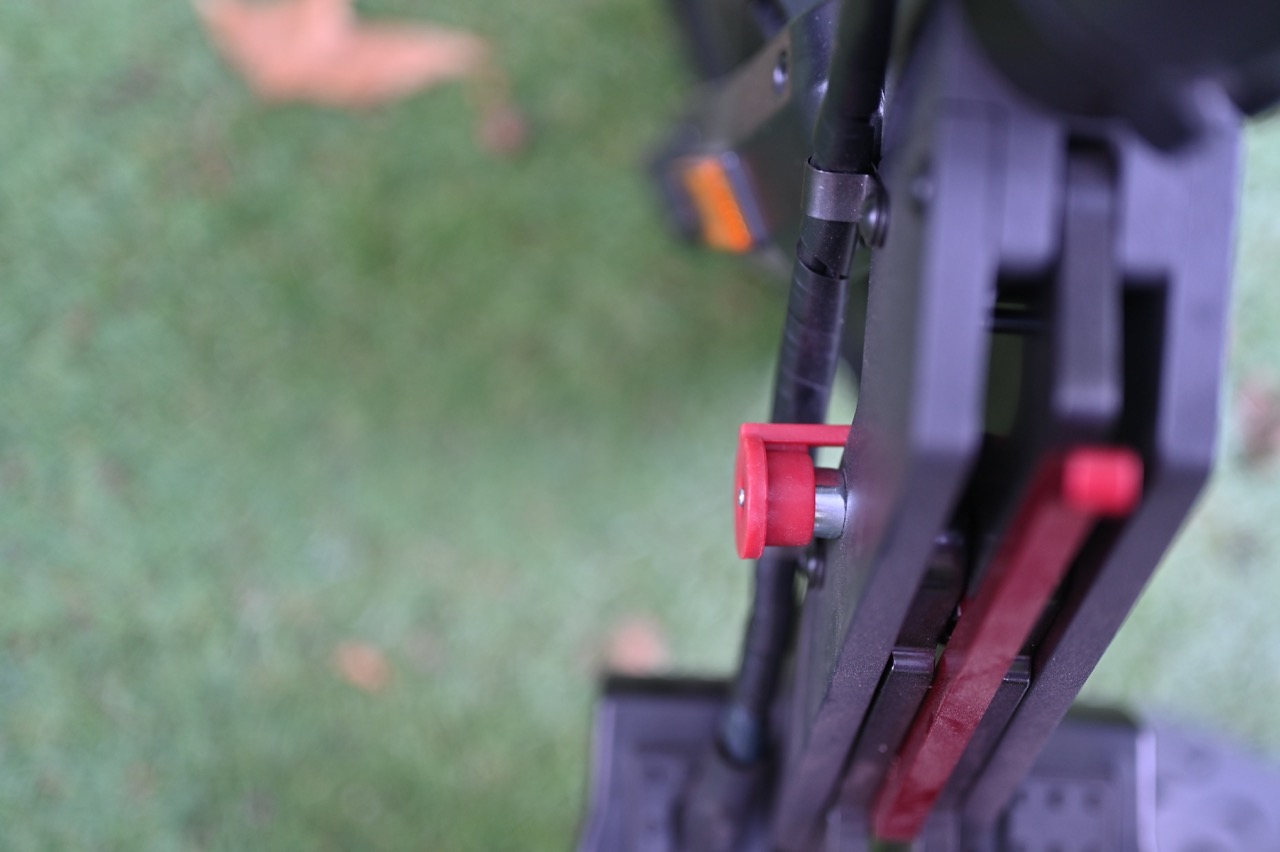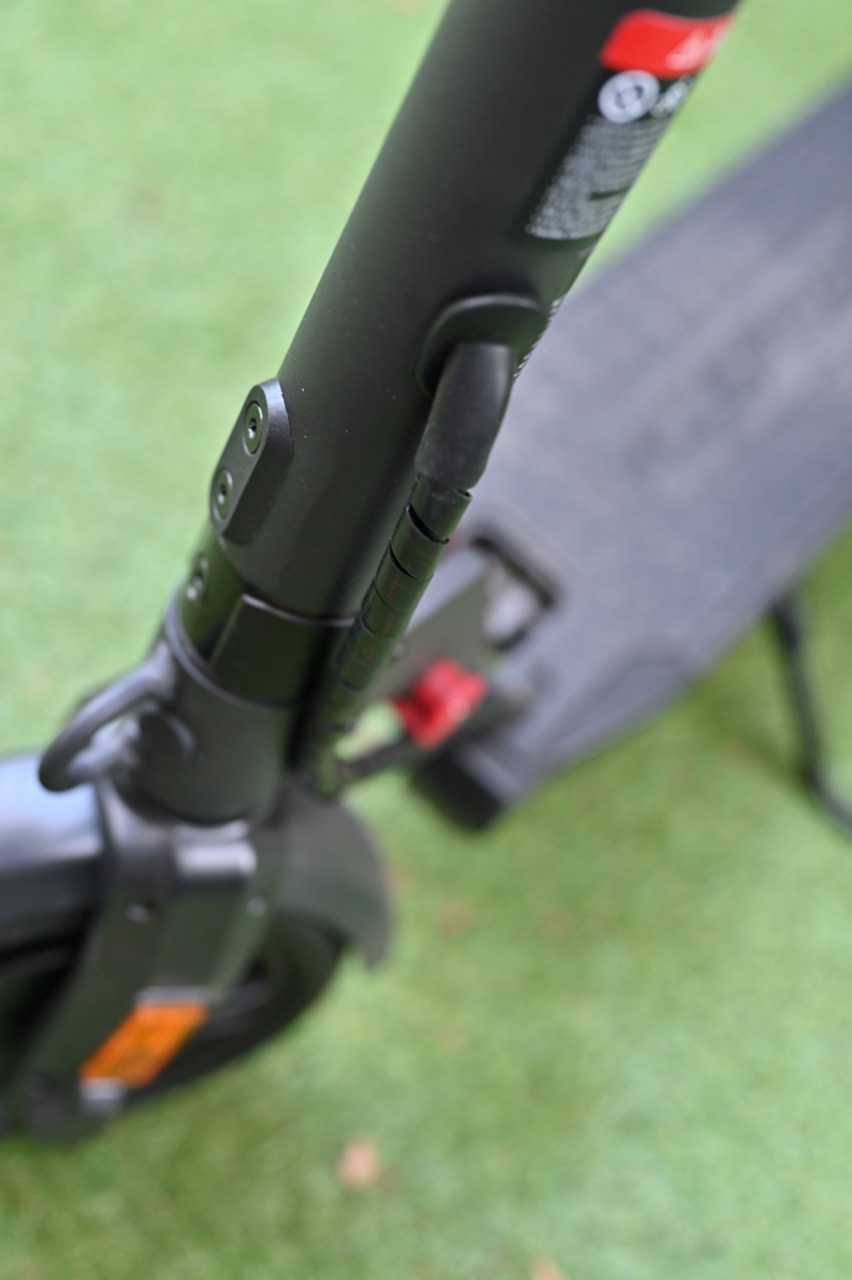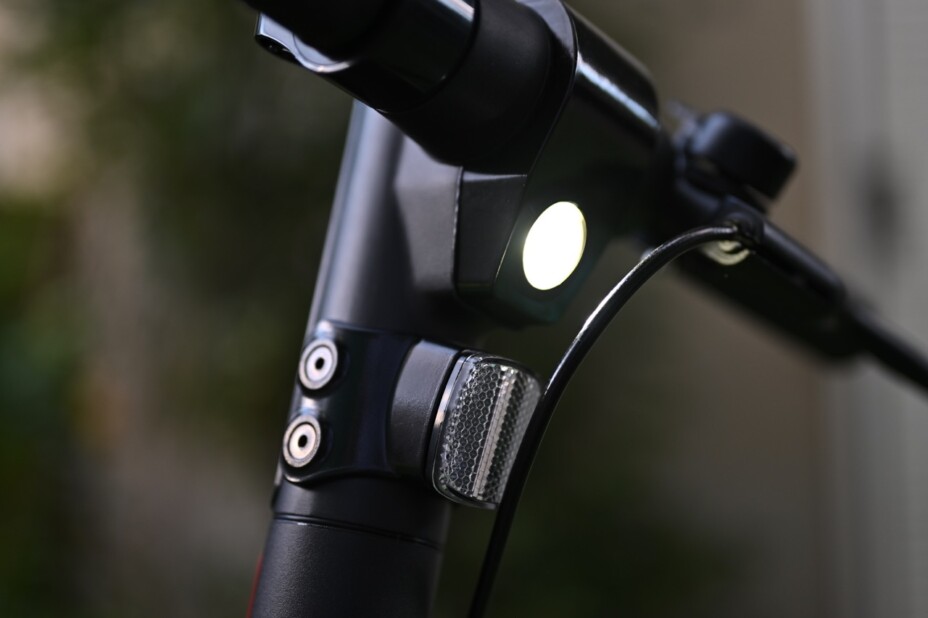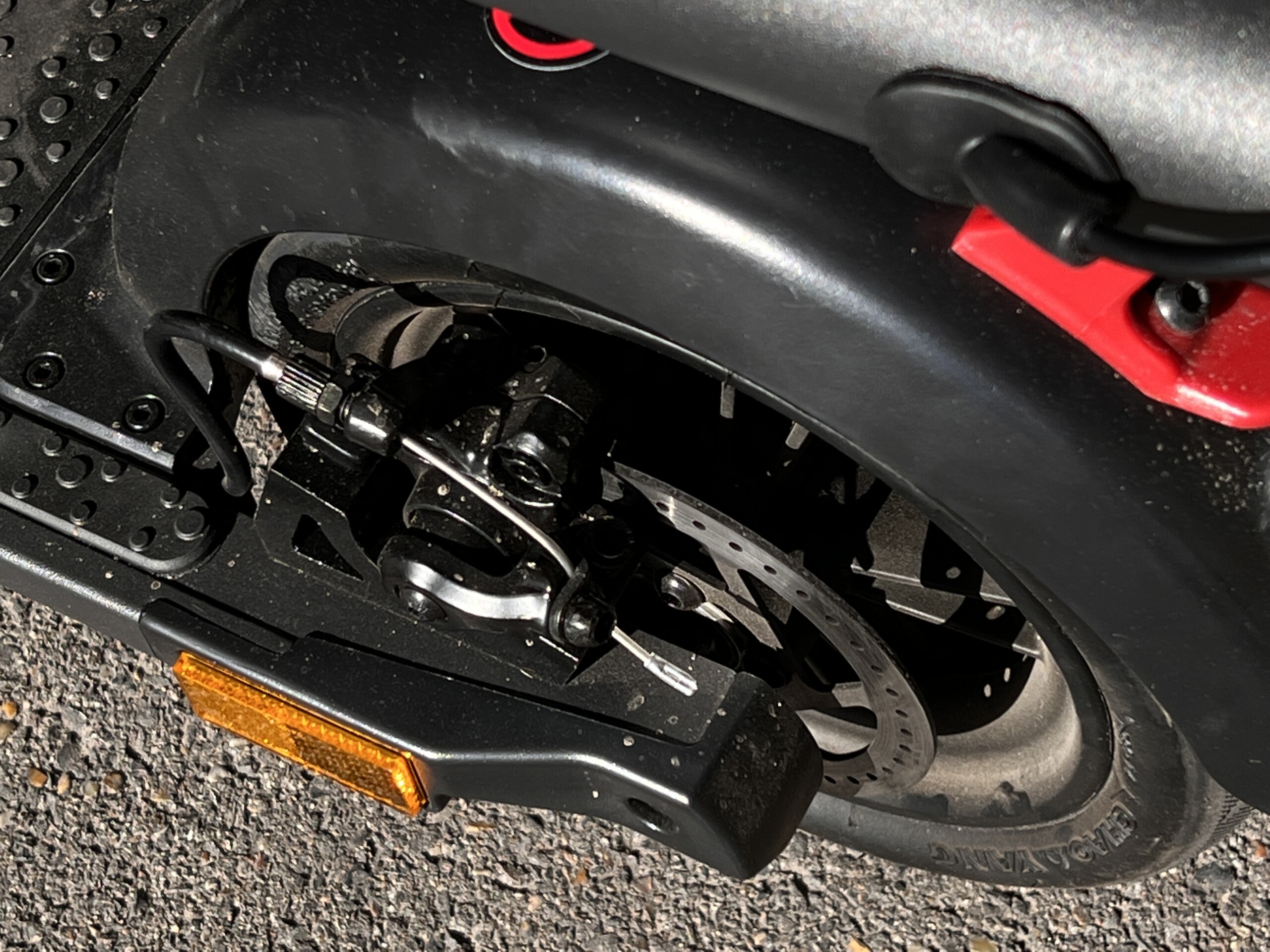While Dacia is to cars, we could say Wispeed is to electric scooters – it does the job, but not much more. The Wispeed T855 boasts an excellent quality-price-performance ratio and autonomy on paper. However, in reality, it falls short. The enticing price and minimalist design cannot compensate for some critical shortcomings.
Technical Specifications
- Model: Wispeed T855
- Claimed Range: 30 km
- Claimed Recharge Time: 300 min
- Top Speed: 25 km/h
- Motor Power: 300 watts
- Maximum Weight Supported: 100 kg
- Price: €348
Design
The black design is simple, but the hard plastics, such as the deck’s coating, give it a toy-like and low-quality appearance. This isn’t necessarily problematic, as a plain black scooter will attract less attention than a gray or white one.
Ergonomics are good, with an ingenious folding system that requires minimal effort, except for bending down. One latch is pulled, another is lowered, and the scooter folds in a fraction of a second. To unfold, simply lift the stem and push until the locking system clicks into place.



The charging port is located on the handlebars. The rubber protection opens from top to bottom. Be careful to close it properly; otherwise, it creates a small ramp for water. However, the suction effect seems efficient.
The grips do not fold, but the overall size is compact, making it an easy model to transport, whether in a car trunk or on public transportation.
Weighing only 14.5 kg, it is easy to carry and climb stairs with. The stem is securely fixed when folded, offering a convenient stationary grip for lifting.




The deck is narrow, with a width of 16.5 cm. In terms of length, it is within the norm, with 102 cm long being sufficient to accommodate up to size 47 feet.
The display is reduced to a minimum: speed, which is locked at 24.9 km/h. The current mode (there are 2) is not displayed, with only an icon for lights and a battery indicator with 4 bars.
Overall, I am torn between a lightweight, easily maneuverable object and a cheap, unconvincing device. Since this is not a phone but a mobility device operating amidst motorized or non-motorized vehicles and pedestrians, this aspect is significant.

Lighting and Braking
The lighting provides the bare minimum, as is typical for scooters in this price range. An additional light would be a useful accessory. Braking is indicated by a flashing rear light.

The mudguard is not a brake (and this becomes a problem later). A sticker warns against pressing on it, implying dire consequences. Therefore, no emergency braking is available.

The rear brake is a standard disc brake, similar to Xiaomi models, with cable braking. A hook allows for suspending a bag, like on the Ninebot E45, which is very convenient. Lastly, the kickstand is well integrated and located in the middle of the scooter, a plus point.
App and Technologies
There is no accompanying app for the Wispeed scooter, as it is a non-connected device. Personally, I rarely use scooter apps. However, this means no settings can be adjusted, including electromagnetic braking (spoiler: it doesn’t have any).
The only button on the handlebars is for turning on the scooter, turning on the headlight, and changing modes, depending on how long it is pressed. Everything is indicated on the silkscreen below, making it simple to use.

Riding
The 300W motor (compared to the average 350W in this range) peaks at 500W, which it genuinely delivers. While the Wispeed T855 struggles on steep hills, it fares no worse than more powerful models like the Ninebot E45 or Xiaomi Scooter 3.
The top speed of 25 km/h is reached quickly, which is convenient. The 8.5-inch inflatable tires with inner tubes provide decent grip, but not much more. On wet surfaces, they become a bit unstable. They are not the CST V3 tires found on other models, but they offer good shock absorption, compensating for the lack of suspension, which isn’t too penalizing.
The T855 features a speed regulator. Press the acceleration wheel for 10 seconds at a constant speed, and you can remove your finger from the trigger. This is well thought out and practical, but it cannot be disabled.

The Wispeed T855 is playful. Its lightweight design allows for easy maneuvering, turning, and leaning. It brings a smile to your face, which is a plus point. The motor tends to make some noise at startup, which is not bothersome, just surprising. However, the lack of smooth, progressive power is an issue.
A bell serves as a warning (better than an electronic horn). The handlebars reach 110 cm, suitable for people between 1.60m and 1.80m tall.
Stability is decent. You can even ride one-handed and use the other to signal turns. So far, so good—until it’s time to brake.
This is where the problems arise. The Wispeed relies on its modest rear disc brake. There is no electromagnetic braking. While this may be interesting for sensations, it is much less so for safety. On the positive side, I couldn’t lock the rear brake on dry surfaces, so there’s no risk of skidding or loss of control.
However, on wet surfaces, the situation is entirely different and even dangerous. The brake lacks bite, and emergency braking is impossible since the mudguard doesn’t serve as a backup.
I tested a new model and didn’t need to adjust the disc or pads. Either way, users wouldn’t likely make these adjustments on this type of model. Nevertheless, this doesn’t change the fact that there is a lack of quick braking options. It took me 15 meters to stop at 25 km/h, double the distance required by a Ninebot D18 at the same speed.

Speed and Performance
Discussing speed, let’s address the speedometer: it’s capped at 24.9 km/h (15.5 mph). I noticed this on a downhill ride when, after reaching this speed limit, the T855 continued to gain speed, surpassing 25 km/h (15.5 mph), without the speedometer displaying the actual speed at that moment.
In summary, the Wispeed T855 has a top speed of 25 km/h (15.5 mph) or slightly less. However, on a slope, it can go even faster, but the speedometer won’t display your accurate speed.
On dry surfaces and in car-free environments (such as bike lanes), the Wispeed T855 is usable. There’s minimal risk despite limited braking. However, on wet surfaces or in traffic, this scooter should be avoided.


At the price it’s being sold for, $349, it will be the first electric scooter for many and a popular choice for teenagers. Even though young people are often more skilled than adults, inadequate braking can rarely be compensated for.

Lastly, the folding system reveals a gap that, on wet surfaces, can allow water to enter. The front fender is too short and unfortunately doesn’t block projections effectively.
Battery Life
Wispeed claims a 30 km (18.6 miles) range. We didn’t quite achieve that. However, with 11.8 km (7.3 miles) on an uphill route and 19.25 km (12 miles) on a standard route, while carrying my 100 kg (220 lbs) weight, it’s still quite decent. For someone lighter, around 70 kg (154 lbs), the range can potentially reach around 20 km (12 miles) on a standard route.
I measured the range twice on flat routes. The last bar starts blinking at 16.5 km (10.25 miles). From there, you have a 2.5 km (1.5 miles) reserve at 25 km/h (15.5 mph). You’ll only use the second mode, as the first one is really slow (limited to 12 km/h or 7.5 mph).
Regarding charging, it takes 4 hours to charge the 7.8 Ah (36V) battery. Be careful, though, as the charger becomes very hot during the charging process. LED lights on the charger change from red to green to indicate when the charge is complete. However, there’s no information on the screen to display the charging percentage. You’ll need to turn it on to check that.
Price and Availability
Available for $349 at consumer electronics stores and supermarkets, the Wispeed T855 competes with the Xiaomi Essential.

